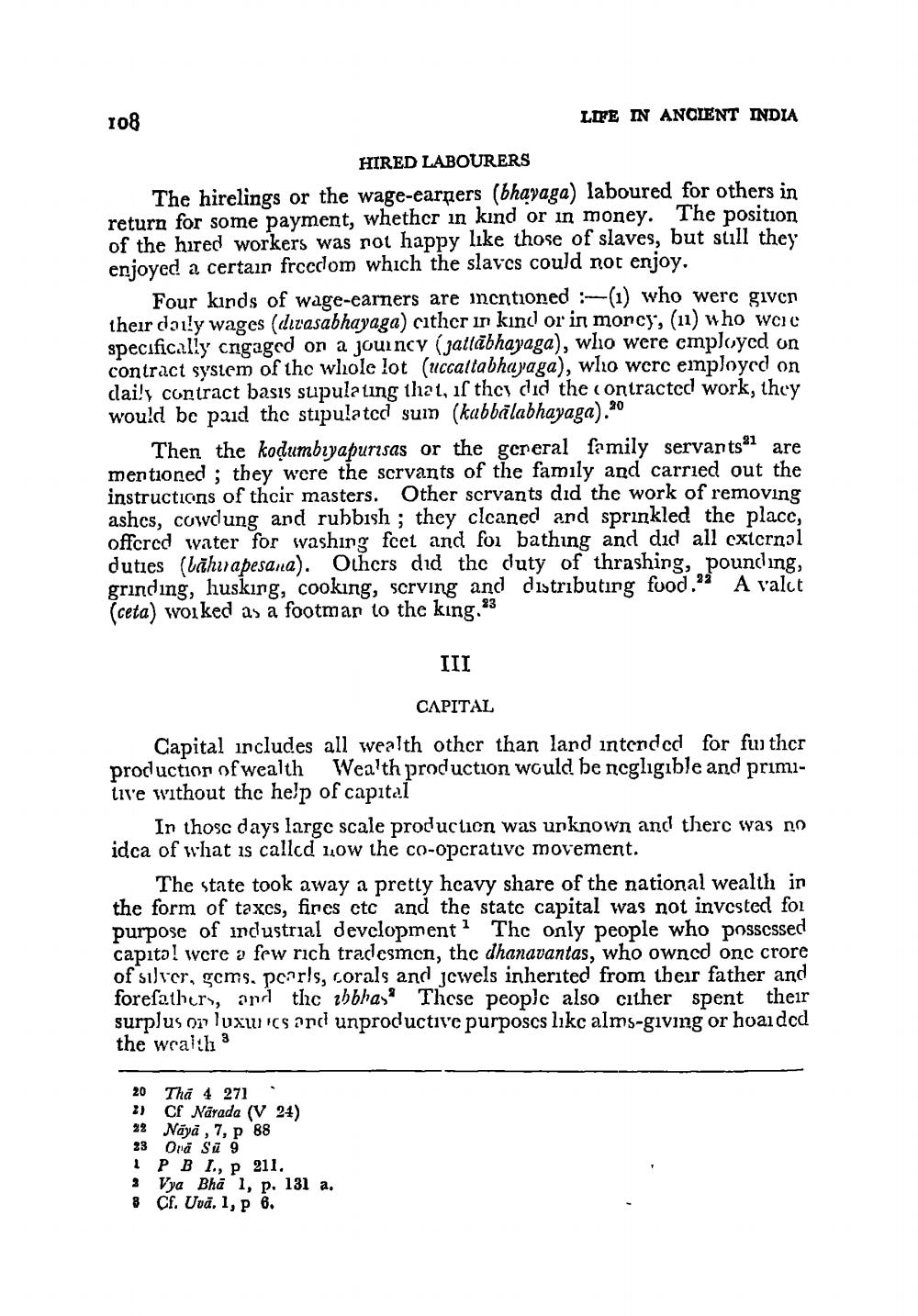________________
108
HIRED LABOURERS
The hirelings or the wage-earners (bhavaga) laboured for others in return for some payment, whether in kind or in money. The position of the hired workers was not happy like those of slaves, but still they enjoyed a certain freedom which the slaves could not enjoy.
Four kinds of wage-earners are incntioned :-(1) who were given their daily wages (divasabhayaga) either in kind or in money, (11) who were specifically engaged on a journey (jattabhayaga), who were employed on contract system of the whole lot (uccattabhayaga), who were employed on daily contract basis supulating that, if they did the contracted work, they would be paid the stipulated sum (kabbalabhayaga).20
Then the koḍumbiyapurisas or the general family servants are mentioned; they were the servants of the family and carried out the instructions of their masters. Other scrvants did the work of removing ashes, cowdung and rubbish; they cleaned and sprinkled the place, offered water for washing feet and for bathing and did all external duties (bahurapesana). Others did the duty of thrashing, pounding, grinding, husking, cooking, serving and distributing food. A valet (ceta) worked as a footman to the king.23
LIFE IN ANCIENT INDIA
CAPITAL
Capital includes all wealth other than land intended for further production of wealth Wealth production would be negligible and primitive without the help of capital
III
In those days large scale production was unknown and there was no idea of what is called now the co-operative movement.
20 Tha 4 271
The state took away a pretty heavy share of the national wealth in the form of taxes, fires etc and the state capital was not invested for purpose of industrial development The only people who possessed capital were a few rich tradesmen, the dhanavantas, who owned one crore of silver, gems. pearls, corals and jewels inherited from their father and forefathers, and the tbbhas These people also cither spent their surplus on luxuries and unproductive purposes like alms-giving or hoarded the wealth a
Cf Narada (V 24)
2)
22 Naya, 7, p 88
23 Ora Sū 9
1 PB I., p 211.
3 Vya Bha 1, p. 131 a.
8 Cf. Uvä. 1, p 6.




